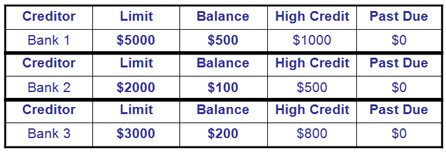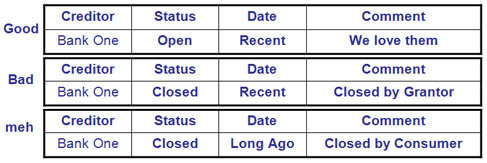Repair My Credit Score
Tweet
Click the image to view the PDF document. Or, to download it, right click the image,
and select 'save target/link as . . .'
In today's economy it's more critical than ever to have a good credit score, but millions of consumers simply don't and often find themselves asking how can I repair my credit score?
In order to repair your credit score you need to repair your credit
report. The items listed on your credit report, and their status, is what makes up your credit score.
Step 1: Stop Damaging Your Credit

Stop doing the things that are causing your score to be low. Making late payments, or skipping payments, are some of the worst things you can do to your score. Just one late payment could drop your score by 100 points, which would take a long time to repair. Maxing out credit cards is another bad habit that will trash your score; even if you pay off your balance at the end of the billing cycle. You never know when your creditor reports to the bureaus. If an account shows your balance to be 100% of the available limit, the credit scoring formula will automatically generate a lower score. And once that low credit score has been assigned, it can take a long time to repair it.
Step 2: Responsible & Active Usage

Use credit, but do so responsibly. Make affordable purchases with your credit card and pay down the balance each month. Do everything you can to keep your balance below 30% of your available credit limit. Get your balance down to 10% and you'll see greater improvements. Doing this demonstrates discipline and control and the credit scoring formula will reward you with a higher score.
Step 3: Keep Older Accounts Active

Keep accounts open and active while working on improving your credit. Each account has a history which represents 35% of your score. You should also focus on using older credit cards, as length of credit history makes up 15% of your score. Don't let your creditor close your account due to inactivity; an account listed as 'closed by grantor" listing lowers your credit score and gives you more damage to repair.
Step 4: Healthy Mix of Credit Types

Have a healthy mix of different types of credit. Have at least one installment and two revolving accounts. Once you have those, be careful about applying for more new credit. Too much available credit is seen as risky behavior by potential lenders. Plus, if you wait until after you've raised your credit score to apply for new loans, you'll qualify for better rates; which will save you lots of money in the long run.
Step 5: Keep an Eye on Your Credit
Examine Accounts for Changes

Including the Bad Accounts

Keep an eye on your credit reports. Make sure all of your positive behaviors are being reported and that everything on your report is accurate. But don't be surprised if you find mistakes; they are quite common.
Step 6: Fix Mistakes
If you come across mistakes, you need to notify the bureaus, in writing, and request their correction. Disputing errors can be a tedious and frustrating process, but a necessary one if you want to repair your credit report and raise your scores.




